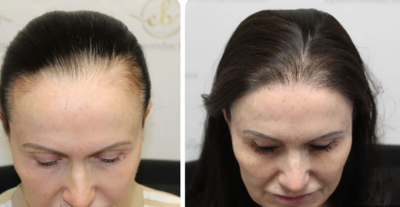
Noticing your hairline creeping back or a bald spot getting bigger isn’t easy. For a lot of people, it’s more than just hair - it’s confidence, it’s how young you feel when you look in the mirror.
That’s why hair transplants have become so popular. They don’t just move follicles around; they can change the way you carry yourself.
But let’s be real: a transplant isn’t something you book on a whim. It’s a medical procedure with real costs, real recovery time, and long-term implications. If you’re considering it, here are a few things worth thinking through before you schedule that first appointment.
1. The Surgeon Matters More Than Anything
This is not the time to gamble. The surgeon you pick will make or break your results. Natural-looking hairlines aren’t created by chance; they’re crafted by someone who’s done this procedure thousands of times.
Do your homework. Look at the photos. Read reviews. If you’re in North Carolina, you might start by searching for a Charlotte hair restoration clinic and narrowing it down from there.
Even within one city, you’ll find big differences in style and expertise. Meet with more than one doctor if you can, and you’ll quickly get a sense of who really knows their craft.
2. Understand the Different Techniques
Most people end up choosing between two methods: FUE (Follicular Unit Extraction) and FUT (Follicular Unit Transplantation).
FUE is more common these days. Individual follicles are taken from the back of the scalp and placed where they’re needed. It tends to leave less noticeable scarring.
FUT, on the other hand, involves taking a strip of skin and can be better if you need a lot of grafts in one go.
Neither option is automatically “better.” It depends on your goals, your budget, and what kind of recovery you’re comfortable with. A good surgeon will walk you through both and explain why one might suit you more than the other.
3. Manage Your Expectations
Here’s a tough truth: no transplant will give you the same thick, full head of hair you had at 18. What it can do is restore density, reshape a hairline, and give you back a look that feels like you.
Keep in mind, too, that hair loss doesn’t stop just because you had a transplant. Many people eventually need a second procedure or ongoing treatments to keep things looking balanced.
In Florida, for example, a lot of people comparing Sarasota hair restoration providers will ask about long-term planning, not just the first surgery. It’s smart to think about where you want to be in ten years, not just next summer.
4. The Cost Question
Let’s not sugarcoat it: hair transplants aren’t cheap. The price depends on the number of grafts, the method used, and, of course, the reputation of the clinic.
It’s tempting to shop around for the lowest price, but this isn’t like picking out furniture. A bad transplant is way more expensive to fix than getting it done right the first time.
That said, many clinics offer financing. Breaking the cost into monthly payments can make it more doable. Just be clear on what’s included in the price, like meds, follow-up visits, or touch-ups may cost extra.
5. Recovery Isn’t Hard, But It Takes Patience
Most people are back at work within a week, but that doesn’t mean it’s all smooth sailing.
Your scalp will be tender. You’ll probably notice some redness or swelling. And yes, the hair they just transplanted? It usually falls out before the new growth comes in. That can be a bit of a mental rollercoaster if you’re not expecting it.
This is why timing matters. If you’re planning a hair transplant in Northern Virginia, think about when in your schedule you can take it easy for a few days.
The last thing you want is to try and hide swelling during a big work presentation or while hosting family.
6. Think Long-Term, Not Just Right Now
Hair loss is a moving target. Even if your transplant looks perfect today, your hairline may shift as the years go on. The best surgeons plan for that. They’ll design something conservative enough that it still looks natural in 10 or 20 years.
A lot of patients also pair surgery with medical treatments like minoxidil or finasteride to protect the hair they still have. It’s worth asking your doctor what makes sense for your situation.
7. Don’t Forget About Location
Convenience plays a bigger role than most people think. Traveling hours for every consultation or follow-up gets old quickly. On the flip side, if the best surgeon for you isn’t in your backyard, it may be worth the trip.
Plenty of patients stick close to home because it makes the whole process simpler. Just weigh the pros and cons. Sometimes peace of mind is worth a little extra travel.
Planning for Success
A hair transplant can be life-changing, but only if you go into it with your eyes open. The surgeon, the method, the cost, the recovery, and the long-term plan all matter. Take your time, ask questions, and don’t rush.
The more you know now, the more confident you’ll feel when it’s finally time to sit in that chair.



(0) comments
We welcome your comments
Log In
Post a comment as Guest
Keep it Clean. Please avoid obscene, vulgar, lewd, racist or sexually-oriented language.
PLEASE TURN OFF YOUR CAPS LOCK.
Don't Threaten. Threats of harming another person will not be tolerated.
Be Truthful. Don't knowingly lie about anyone or anything.
Be Nice. No racism, sexism or any sort of -ism that is degrading to another person.
Be Proactive. Use the 'Report' link on each comment to let us know of abusive posts.
Share with Us. We'd love to hear eyewitness accounts, the history behind an article.